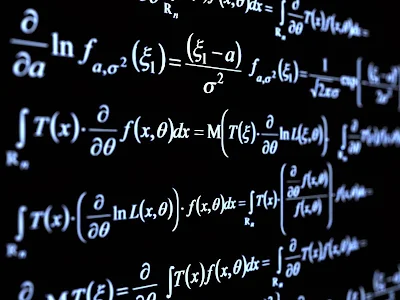Microsoft Visual Basic 2010
Math Functions
Math and String Functions
In addition to performing simple arithmetic and string operations with the arithmetic and string operators, Visual Basic programs can take advantage of several built-in mathematical functions and string functions to perform useful processing that, otherwise, could require highly complex original code.
🧠Mathematical Functions
Popular mathematical functions are summarized in the following table. Note that certain functions do not require the Math. prefix.
Function | Use |
|---|---|
| Math.Abs() | Returns the absolute value. Math.Abs(-10) returns 10. |
| Math.Ceiling() | Returns an integer that is greater than or equal to a number. Math.Ceiling(5.333) returns 6. |
| Fix() | Returns the integer portion of a number. Fix(5.3333) returns 5. |
| Math.Floor() | Returns an integer that is less than or equal to a number. Fix(5.3333) returns 5. |
| Int() | Returns the integer portion of a number. Int(5.3333) returns 5. |
| Math.Max() | Returns the larger of two numbers. Math.Max(5,7) returns 7. |
| Math.Min() | Returns the smaller of two numbers. Math.Min(5,7) returns 5. |
| Math.Pow() | Returns a number raised to a power. Math.Pow(12,2) returns 144. |
| Rnd() | Returns a random number between 0 and 1. Used in conjunction with Randomizestatement to initialize the random number generator. |
| Math.Round() | Rounds a number to a specified number of decimal places. Rounds up on .5. Math.Round(1.1234567,5) returns 1.12346. |
| Math.Sign() | Returns the sign of a number. Returns -1 if negative and 1 if positive. Math.Sign(-5) returns -1. |
| Math.Sqrt() | Returns the square root of a positive number. Math.Sqrt(144) returns 12. |
🥈Random Numbers
The Rnd() function returns a random number between 0 and 1. More likely, the need is to generate a number within a particular range, between a given low and high number. This is accomplished with the following formula.
| Math.floor((high - low + 1) * Rnd() + low) |
Math.floor((10 - 0 + 1) * Rnd() + 0)
🗣️String Functions
Several built-in string functions perform string manipulations to augment simple concatenation with the "&" operator. These functions are summarized in the following table.
Function | Use |
|---|---|
| Asc() | Returns the character code of the first character of a string. Asc("A") returns 65. |
| Chr() | Returns the display character of a character code. Chr(65) returns "A". |
| GetChar() | Returns the character at a specified position in a string, counting from 1. GetChar("This is a string", 7) returns "s". |
| InStr() | Returns the starting position in a string of a substring, counting from 1. InStr("This is a string", "string") returns 11. |
| InStrRev() | Returns the starting position in a string of a substring, searching from the end of the string. InStr("This is a string", "string") returns 11. |
| LCase() | Returns the lower-case conversion of a string. LCase("THIS IS A STRING") returns "this is a string". |
| Left() | Returns the left-most specified number of characters of a string. Left("This is a string", 4) returns "This". |
| Len() | Returns the length of a string. Len("This is a string") returns 16. |
| LTrim() | Removes any leading spaces from a string. LTrim(" This is a string") returns "This is a string". |
| Mid() | Returns a substring from a string, specified as the starting position (counting from 1) and the number of characters. Mid("This is a string", 6, 4) returns "is a". |
| Replace() | Replaces all occurrences of a sub-string in a string. Replace("This is a string", " s", " longer s") returns "This are a longer string" (replaces an "s" preceded by a blank space). |
| Right() | Returns the right-most specified number of characters of a string. Right("This is a string", 6) returns "string". |
| RTrim() | Removes any trailing spaces from a string. RTrim("This is a string ") returns "This is a string". |
| Str() | Returns the string equivalent of a number. Str(100) returns "100". |
| Space() | Fills a string with a given number of spaces. "This" & Space(5) & "string" returns "This string". |
| StrComp() | Compares two strings. Return values are 0 (strings are equal), 1 (first string has the greater value), or -1 (second string has the greater value) based on sorting sequence. StrComp("This is a string", "This string") returns -1. |
| StrReverse() | Reverses the characters in a string. StrReverse("This is a string") returns "gnirts a si sihT". |
| Trim() | Removes any leading and trailing spaces from a string. Trim(" This is a string ") returns "This is a string". |
| UCase() | Returns the upper-case conversion of a string. UCase("This is a string") returns "THIS IS A STRING". |
| Val() | Converts a numeric expression to a number. Val( (1 + 2 + 3)^2 ) returns 36. |
The above summaries give you a basic idea of the uses of these arithmetic and string functions. There are occasions throughout these tutorials to see them in action and in combination as they are applied to various processing needs.
Explore More Math in VB!
If you enjoyed this discussion, take your understanding of number theory even further with my deep dive into the fascinating Collatz Conjecture in VB .NET.
Read About Collatz Conjecture →♥ Here are some online Visual Basic lessons and courses:













